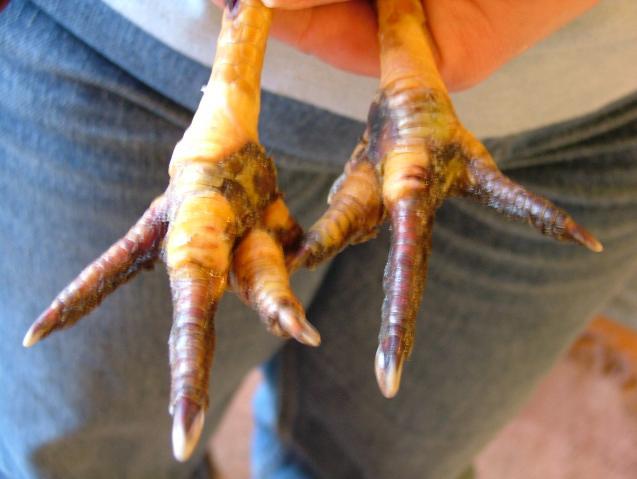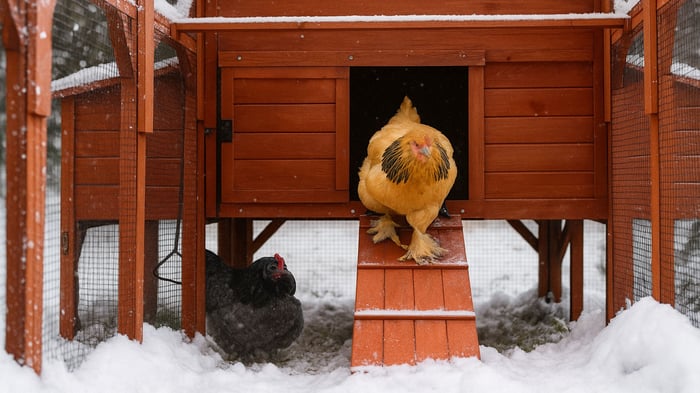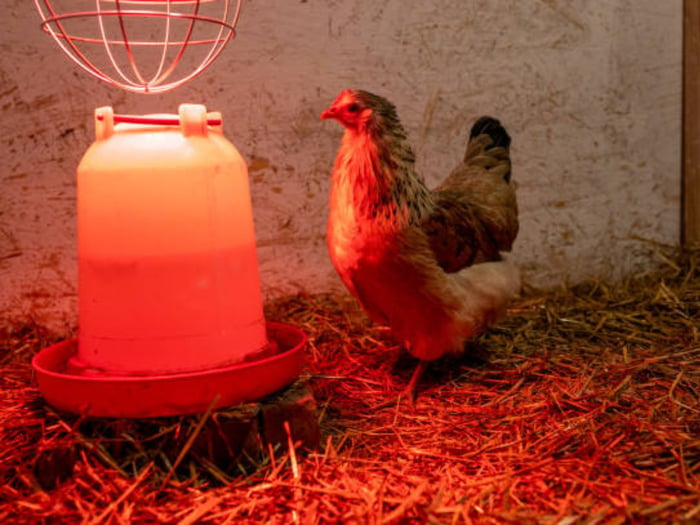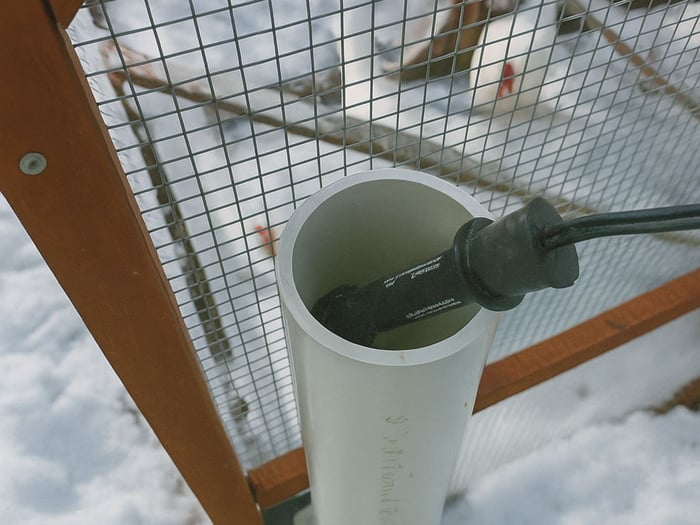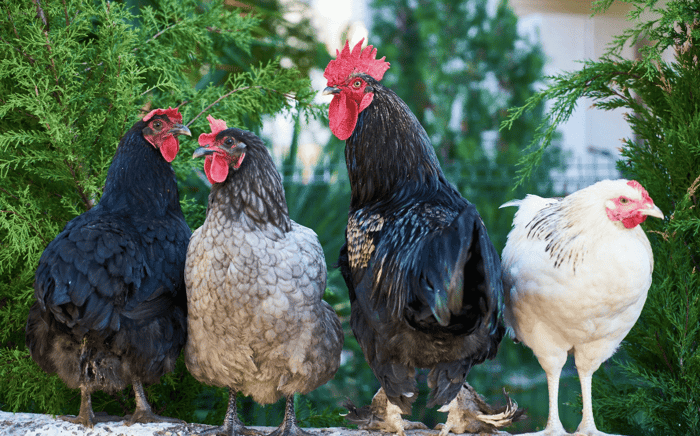Table of Contents
- Chicken Coop Ventilation for Winter: Preventing Humidity and Frostbite
- Why Moisture, Not Cold, Causes the Most Winter Damage
- How Frostbite Happens Inside a Winter Coop
- The Role of Ventilation in Winter Coop Health
- Signs Your Coop May Have a Humidity Problem
- When Natural Ventilation Is Not Enough
- The Best Solution: Automated Airflow for Winter Coops
- What About Heat Lamps or Extra Heat?
- Final Thoughts: Keep Winter Air Dry and Your Flock Will Thrive
- FAQs
Chicken Coop Ventilation for Winter: Preventing Humidity and Frostbite
Winter can be tough on backyard flocks, but the most serious cold weather risk often is not the temperature, it is the humidity trapped inside the coop. Frostbite is far more likely to occur when moisture builds up in the air and settles on your chickens and especially on their combs, wattles, and toes. Understanding how humidity forms, why it becomes dangerous, and how proper chicken coop ventilation prevents frostbite is the foundation of keeping your flock safe all season long.
Why Moisture, Not Cold, Causes the Most Winter Damage
Chickens tolerate cold remarkably well. Their feathers insulate their bodies, their metabolism runs hot, and most breeds can handle freezing temperatures with ease. What they cannot tolerate is damp, humid air.
Every chicken releases moisture through breathing and droppings. On cold nights, especially when windows are sealed tightly and airflow slows down, that moisture rises into the air and stays there. As temperatures drop, the trapped humidity condenses on surfaces and on the birds themselves.
Moisture on exposed skin freezes faster than dry skin. This is why frostbite often appears even on days when temperatures do not seem dangerously low. Large combed breeds and roosters with bigger wattles are especially vulnerable.
The real issue is not the cold. It is the combination of cold and dampness. That combination can only be prevented with proper chicken coop ventilation that continuously removes moisture and replaces it with fresh air.
How Frostbite Happens Inside a Winter Coop
Frostbite begins when moisture settles on a chicken’s extremities and freezes. Inside a poorly ventilated coop, the process typically unfolds in a predictable pattern:
Chickens breathe throughout the night and release warm, moist air.
Moisture accumulates quickly when chicken coop ventilation is limited.
Warm indoor air hits cold surfaces and creates condensation.
Condensation collects on combs, wattles, and toes as the birds sleep.
Temperatures drop, and the dampness freezes.
Tissue becomes damaged, leading to swelling, scabbing, pain, and in severe cases permanent injury.
Once frostbite develops, healing can take weeks. Birds may experience long term sensitivity and scarring, and in extreme cases tissue loss. Preventing moisture buildup is always easier and safer than attempting to treat frostbite once it appears.
The Role of Ventilation in Winter Coop Health
Many new chicken keepers assume that sealing every crack in winter will help keep chickens warm. In reality, sealing everything traps humid air and increases the risk of frostbite, respiratory stress, and ammonia buildup.
Healthy winter air has three qualities:
1. Dry
Moisture must escape steadily through intentional openings, not through drafts blowing directly across the roost.
2. Fresh
Air should circulate slowly and consistently. This prevents moisture, ammonia, and odor from accumulating inside the coop.
3. Stable
Temperature swings matter far less than moisture levels. A dry coop at fifteen degrees is safer than a damp coop at thirty degrees.
This is why winter ventilation is not the same thing as drafts. Drafts blow cold air directly across your birds. Proper chicken coop ventilation moves humid air upward and outward and gently pulls in fresh air without chilling your flock.
Signs Your Coop May Have a Humidity Problem
Even with vents open, some climates naturally fluctuate between wet and dry cycles or create weather patterns that trap moisture. You may need to evaluate your airflow if you notice:
• Condensation on windows
• A musty or damp smell inside the coop
• Water droplets inside the roof or walls
• Frostbite developing despite moderate temperatures
• Wet bedding under the roost
• An ammonia smell that irritates your eyes or nose
• Chickens coughing, sneezing, or showing respiratory stress
These symptoms mean humidity is accumulating inside the coop more quickly than it can escape.
When Natural Ventilation Is Not Enough
In many regions, passive ventilation works well. Openings along the roofline, soffit vents, and windows covered with hardware cloth are usually enough to keep the environment dry.
However, certain climates require more than passive airflow. If you live in an area with:
• very harsh or prolonged winters
• weather that shifts between freezing and thawing
• naturally high humidity in winter
• large flocks living in a smaller coop
• snow cover that blocks normal ventilation routes
You may need a system that actively moves air through the coop. In these situations, chicken coop ventilation becomes more than a design choice. It becomes a tool for preventing frostbite and protecting respiratory health.
The Best Solution: Automated Airflow for Winter Coops
Many chicken keepers spend winter adjusting vents, cracking windows, closing openings during storms, and guessing when humidity is building. Guessing works in mild climates but becomes difficult in regions where frostbite is a yearly concern.
For those situations, an automated approach can help maintain consistent airflow.
The Coop Climate Control System provides targeted control over humidity and airflow.This system offers precise, hands off management of winter moisture and is especially beneficial when passive ventilation cannot keep the coop dry enough.
We may be a little biased here- but we really do use this, and it is a total game changer for our coops in the in the winter!
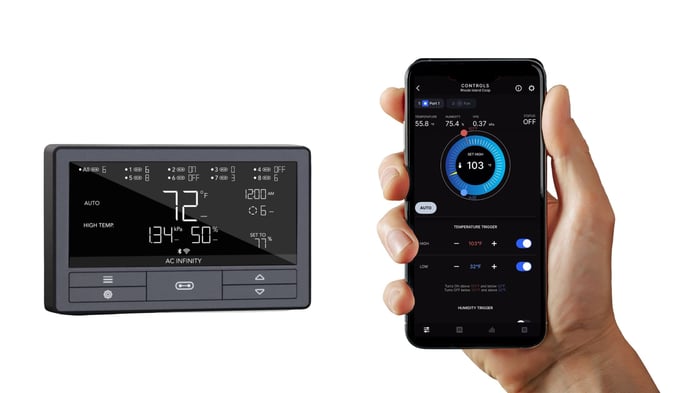
Automated Humidity and Temperature Monitoring
A precision sensor inside the coop tracks humidity and temperature in real time. When moisture levels rise, the system responds immediately.
Smart Ventilation
A quiet fan, installed over a coop window, draws out humid air and brings in fresh air only when needed. This prevents warm, damp air from settling on your birds as they sleep.
Mobile Control
The AC Infinity app allows you to monitor and adjust airflow from anywhere. Whether you are at home, at work, or traveling, you can always check the conditions inside your coop.
Designed for Flock Health
The system does not heat the coop or interfere with your flock’s natural cold tolerance. It focuses strictly on airflow, which is the most effective way to prevent humidity driven frostbite.
For many chicken keepers, especially in northern climates, automated chicken coop ventilation provides peace of mind and creates a stable, dry environment throughout winter.
Coop Climate Control System - Smart Ventilation & Fan Controller System + Power Outlet

$ 169.99
$ 199.99
Overview Meet the first-of-its-kind Coop Climate Control System, built with modern technology to bring comfort and air quality to your flock. Every chicken owner faces the same challenge: keeping a coop properly ventilated. Too much humidity leads to frostbite in winter. Too… read more
What About Heat Lamps or Extra Heat?
Most flocks do not need artificial heat in winter, and heat lamps pose real fire dangers. However, there are situations where safe supplemental heat can be helpful, such as extreme cold snaps or climates far below zero.
This is where a radiant heating panel becomes a safer alternative. Unlike heat lamps, a radiant panel does not create open flame, does not overheat the coop, and does not rely on risky bulbs. It provides gentle warmth without disrupting the airflow you need during winter. If you discuss or recommend the heating panel in your blog, you can link that product as well.
A heating panel is not a replacement for chicken coop ventilation. Instead, it is an additional tool that can support your flock in very cold conditions without trapping moisture.
Chicken Coop Heater - Energy Efficient Radiant Heat - 3 Year Warranty

$ 114.99
Product Description: The Big Chicken Co. Coop Heater and brooder heater is a perfect solution to keep your chickens warm and safe during the cold months of the year. This chicken house heater for sale has been designed with both… read more
Final Thoughts: Keep Winter Air Dry and Your Flock Will Thrive
Winter chicken care is not about chasing warmth. It is about controlling moisture. Frostbite almost always begins with humidity, and humidity is controlled through airflow, not heat.
Whether your climate works well with traditional chicken coop ventilation or you need a more advanced automated solution like the Coop Climate Control System, the goal remains the same. You want a dry, healthy coop where your chickens can safely ride out the winter months.
When air moves consistently, moisture stays low, and frostbite stays away. With good ventilation and mindful monitoring, your flock can thrive even on the coldest days of the year.
FAQs
Why does humidity cause frostbite in chickens?
Humidity collects on combs, wattles, and toes. When that moisture freezes, it damages the tissue. Frostbite is far more likely in damp coops than in dry, cold ones.
How can I reduce humidity in my chicken coop during winter?
Use proper chicken coop ventilation that moves humid air out and brings in fresh air without creating drafts. Removing wet bedding and avoiding overcrowding also helps.
Do chickens need heat in the winter?
Most chickens do not need added heat. They tolerate cold well as long as the coop is dry. Heat panels can be used in extreme climates, but heat lamps should be avoided due to fire risk.
What are the first signs of frostbite in chickens?
Early signs include pale or whitish tips on combs or wattles. As frostbite progresses, swelling, redness, blackened tissue, and scabbing may appear.
When should I consider an automated ventilation system?
If your coop regularly develops condensation, musty odors, frostbite, damp bedding, or ammonia smell despite having vents open, automated airflow can help regulate humidity consistently.


.png)
